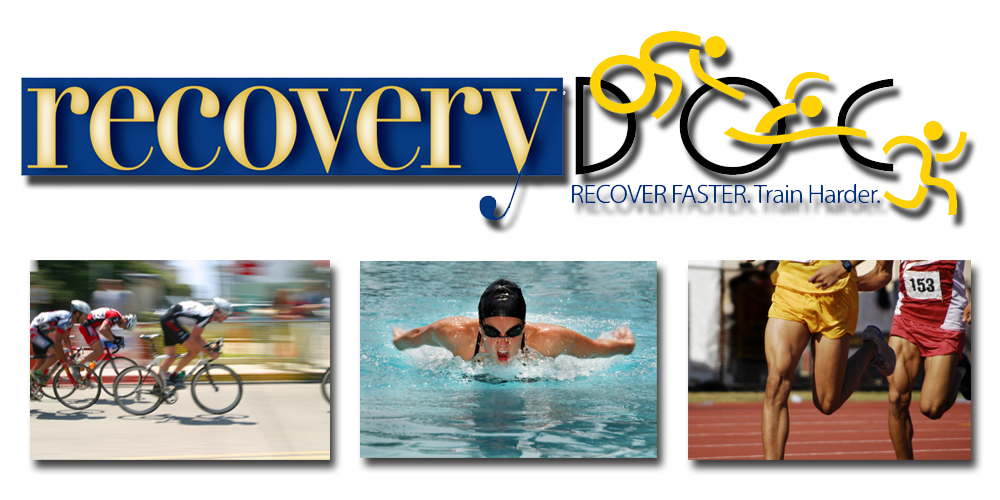
A March 2010 systematic review conducted in Germany continues to underscore the value of proprioceptive training in preventing sports related injuries. Take a look at this summary as well as one done in 2008. If your working with athletes and your not doing proprioceptive training the you need to put down your chisel and stone and read up on the neurmuscular training.
Neuromuscular training for sports injury prevention: a systematic review.
Med Sci Sports Exerc. 2010 Mar;42(3):413-21.
Hübscher M, Zech A, Pfeifer K, Hänsel F, Vogt L, Banzer W.
Department of Sports Medicine, Goethe-University Frankfurt, Frankfurt, Germany. m.huebscher@sport.uni-frankfurt.de
PURPOSE: The aim of this systematic review was to assess the effectiveness of proprioceptive/neuromuscular training in preventing sports injuries by using the best available evidence from methodologically well-conducted randomized controlled trials and controlled clinical trials without randomization.
METHODS: Two independent researchers performed a literature search in various electronic databases and reference lists. The reviewers independently assessed trials for inclusion criteria and methodological quality and extracted the data. Focusing on studies of high methodological quality, relative risks (RR) and 95% confidence intervals (CI) were used to estimate treatment effects.
RESULTS: From a total of 32 relevant studies, 7 methodologically well-conducted studies were considered for this review. Pooled analysis revealed that multi-intervention training was effective in reducing the risk of lower limb injuries (RR = 0.61, 95% CI = 0.49-0.77, P < rr =" 0.46," ci =" 0.28-0.76," rr =" 0.50," ci =" 0.31-0.79," rr =" 0.64," ci =" 0.46-0.9," rr =" 0.49," ci =" 0.13-1.8," p =" 0.28).">
CONCLUSION: On the basis of the results of seven high-quality studies, this review showed evidence for the effectiveness of proprioceptive/neuromuscular training in reducing the incidence of certain types of sports injuries among adolescent and young adult athletes during pivoting sports. Future research should focus on the conduct of comparative trials to identify the most appropriate and effective training components for preventing injuries in specific sports and populations.
Balance improvements in female high school basketball players after a 6-week neuromuscular-training program.
J Sport Rehabil. 2009 Nov;18(4):465-81.
McLeod TC, Armstrong T, Miller M, Sauers JL.
Athletic Training Program, A.T. Still University, Mesa, AZ, USA.
CONTEXT: Poor balance has been associated with increased injury risk among athletes. Neuromuscular-training programs have been advocated as a means of injury prevention, but little is known about the benefits of these programs on balance in high school athletes.
OBJECTIVE: To determine whether there are balance gains after participation in a neuromuscular-training program in high school athletes.
DESIGN: Nonrandomized controlled trial.
SETTING: All data were collected at each participating high school before and after a 6-wk intervention or control period.
PARTICIPANTS: 62 female high school basketball players recruited from the local high school community and assigned to a training (n = 37) or control (n = 25) group.
INTERVENTION: Training-group subjects participated in a 6-wk neuromuscular-training program that included plyometric, functional-strengthening, balance, and stability-ball exercises.
MAIN OUTCOME MEASURES: Data were collected for the Balance Error Scoring System (BESS) and Star Excursion Balance Test (SEBT) before and after the 6-wk intervention or control period.
RESULTS: The authors found a significant decrease in total BESS errors in the trained group at the posttest compared with their pretest and the control group (P = .003). Trained subjects also scored significantly fewer BESS errors on the single-foam and tandem-foam conditions at the posttest than the control group and demonstrated improvements on the single-foam compared with their pretest (P = .033). The authors found improvements in reach in the lateral, anteromedial, medial, and posterior directions in the trained group at the posttest compared with the control group (P < .05) using the SEBT.
CONCLUSION: The study demonstrates that a neuromuscular-training program can increase the balance and proprioceptive capabilities of female high school basketball players and that clinical balance measures are sensitive to detect these differences.
Effect of proprioception training on knee joint position sense in female team handball players.
Br J Sports Med. 2008 Jun;42(6):472-6. Epub 2008 Apr 7.
Pánics G, Tállay A, Pavlik A, Berkes I.
Faculty of Physical Education and Sports Science, Semmelweis University, Budapest, Hungary. gergelypanics@gmail.com
BACKGROUND: A number of studies have shown that proprioception training can reduce the risk of injuries in pivoting sports, but the mechanism is not clearly understood.
AIM: To determine the contributing effects of propioception on knee joint position sense among team handball players.
STUDY DESIGN: Prospective cohort study.
METHODS: Two professional female handball teams were followed prospectively for the 2005-6 season. 20 players in the intervention team followed a prescribed proprioceptive training programme while 19 players in the control team did not have a specific propioceptive training programme. The coaches recorded all exposures of the individual players. The location and nature of injuries were recorded. Joint position sense (JPS) was measured by a goniometer on both knees in three angle intervals, testing each angle five times. Assessments were performed before and after the season by the same examiner for both teams. In the intervention team a third assessment was also performed during the season. Complete data were obtained for 15 subjects in the intervention team and 16 in the control team. Absolute error score, error of variation score and SEM were calculated and the results of the intervention and control teams were compared.
RESULTS: The proprioception sensory function of the players in the intervention team was significantly improved between the assessments made at the start and the end of the season (mean (SD) absolute error 9.78-8.21 degrees (7.19-6.08 degrees ) vs 3.61-4.04 degrees (3.71-3.20 degrees ), p<0.05).>0.05).
CONCLUSION: This is the first study to show that proprioception training improves the joint position sense in elite female handball players. This may explain the effect of neuromuscular training in reducing the injury rate.
Neuromuscular control of trunk stability: clinical implications for sports injury prevention.
J Am Acad Orthop Surg. 2008 Sep;16(9):497-505.
Zazulak B, Cholewicki J, Reeves NP.









.JPG)





No comments:
Post a Comment